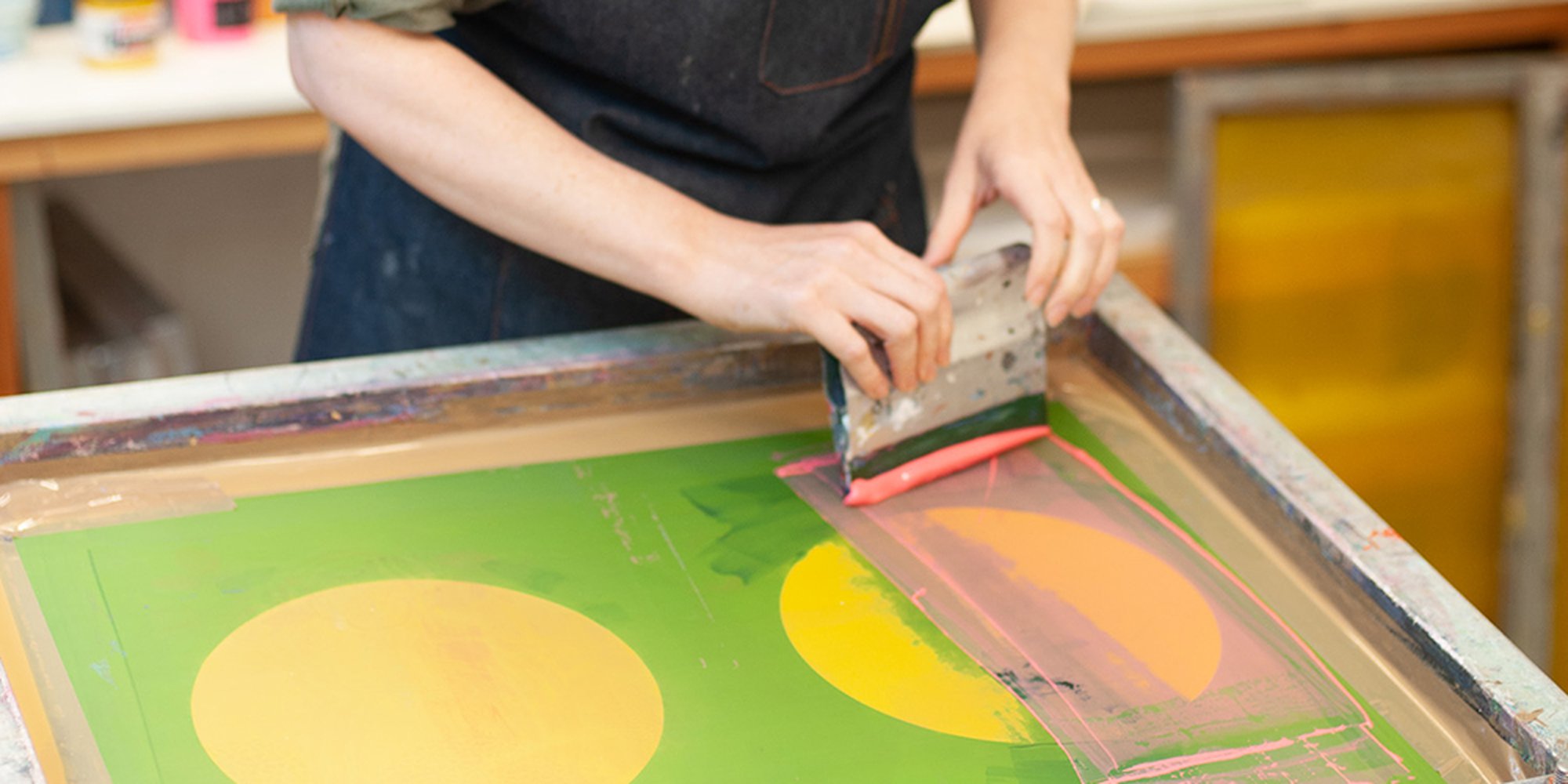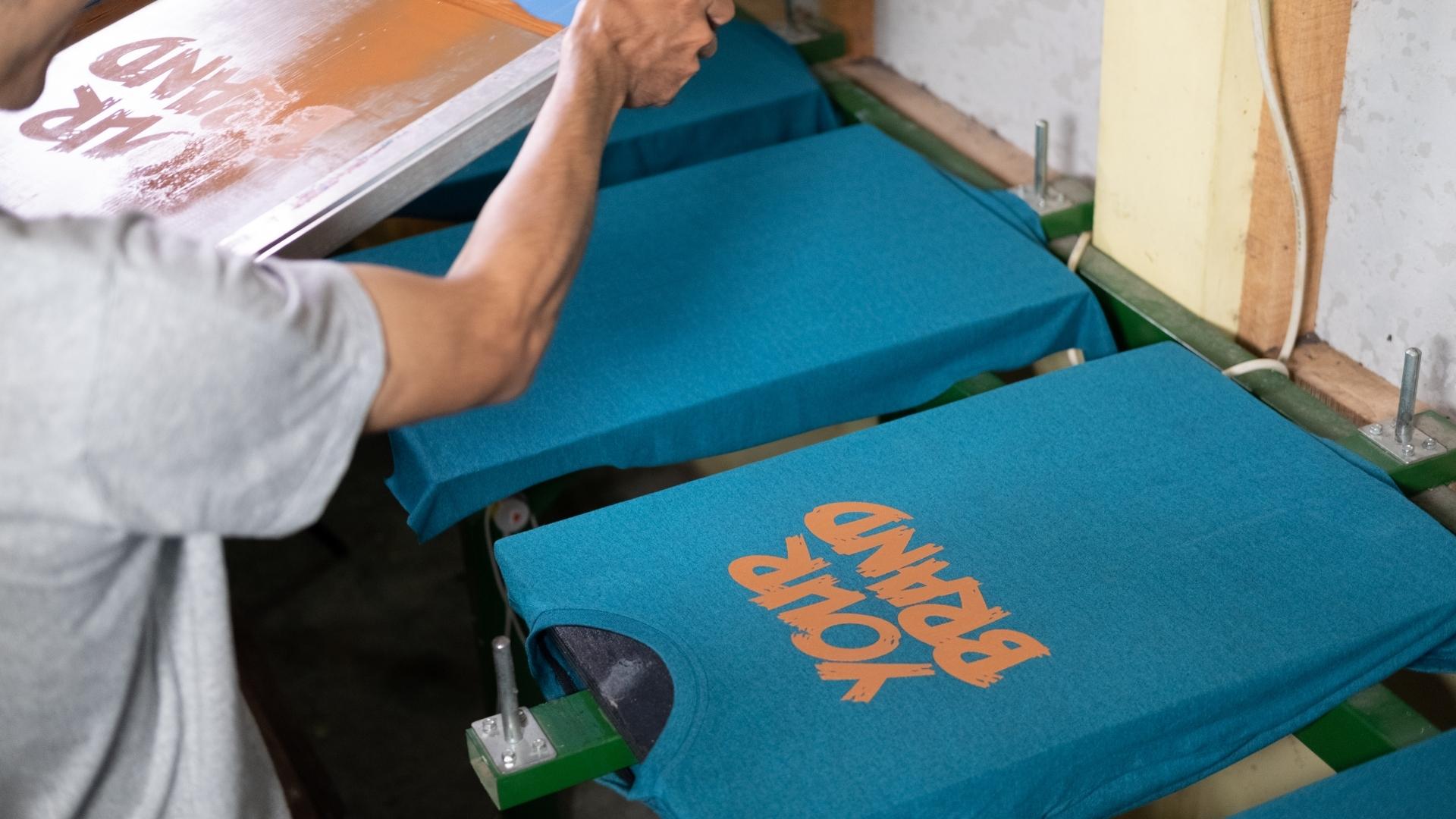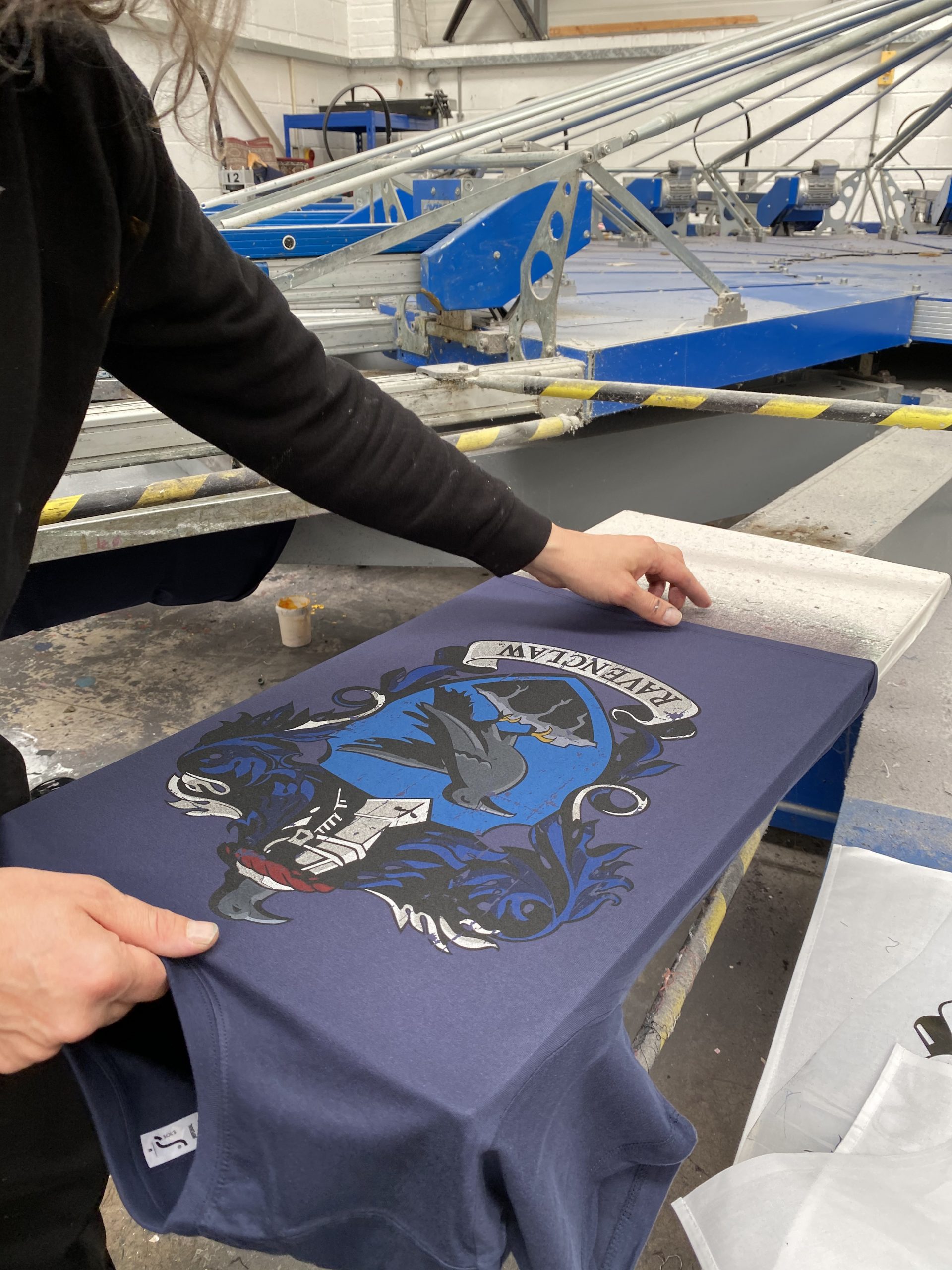Discover the Numerous Kinds of Screen Printing Techniques for Your Next Job
Screen printing provides a varied array of strategies that can boost any imaginative project. From traditional techniques like serigraphy to modern technologies such as direct-to-garment printing, each approach has its special benefits. Specialty choices, including environmentally friendly and metallic inks, present a lot more opportunities. Comprehending these techniques can substantially influence the final end result. However, the difficulty lies in picking the most appropriate approach for details demands and preferred results. What variables should one think about?

The Fundamentals of Screen Printing
Although screen printing may appear complex, it is fundamentally a simple procedure that involves moving ink through a mesh screen onto various surface areas. The method begins with the development of a pattern, which specifies the design to be published. This stencil is affixed to a mesh screen, usually made of polyester or nylon. When the pattern remains in area, ink is put on the screen and pressed through the mesh using a squeegee, resulting in the desired pattern being published on the underlying material.
Screen printing can be carried out on a wide variety of substratums, including paper, plastic, and fabric, making it a flexible choice for various tasks. The procedure enables lively shades and elaborate styles, making it prominent in sectors such as art, marketing, and style. Recognizing these basics furnishes people with the fundamental expertise called for to explore advanced methods in screen printing.
Typical Screen Printing Techniques
Typical screen printing methods have been employed for centuries, protecting the workmanship and artistry of this technique. This strategy utilizes a mesh screen to move ink onto a substrate, such as material or paper, enabling dynamic and resilient layouts. The procedure begins with creating a pattern, which obstructs particular locations of the screen to regulate where the ink will certainly be used.
One popular technique is serigraphy, frequently utilized for creative prints and limited versions. An additional is using water-based inks, which are eco-friendly and provide a soft feeling on fabrics - 10:9 Design contact. Additionally, typical approaches can consist of hands-on printing, where artisans use ink with a squeegee, making sure precision and interest to detail
These techniques stay valued in the industry for their tactile quality and the special structures they produce, attracting both developers and customers who value the heritage of screen printing.
Digital Screen Printing Innovations
As the need for faster production and personalization in the printing sector has risen, digital screen printing developments have emerged as a game-changer. This modern technology mixes standard screen printing approaches with digital procedures, allowing for fast prototyping and detailed designs that were previously tough to accomplish. One substantial development is the introduction of direct-to-garment (DTG) printing, which helps with top notch, full-color prints on various fabrics without the need for displays. In addition, innovations in ink formulations have actually caused eco-friendly alternatives that maintain lively shades while decreasing environmental impact. Using automated systems further improves production, minimizing labor prices and improving precision. These innovations not only deal with small set orders and individualized layouts yet additionally enable for quicker turnaround times, making them suitable for companies concentrated on meeting client demands in a fast-paced market. Digital screen printing, subsequently, represents a vital development in the domain of printing methods.
Specialty Screen Printing Techniques
Exploring specialty screen printing methods reveals a varied variety of techniques that press the borders of creative thinking and performance in the printing industry. Among these, glow-in-the-dark inks offer a distinct visual result, making layouts come alive in low-light conditions. Metallic inks, recognized for their shimmering surface, include a touch of high-end to published materials. An additional cutting-edge method is discharge printing, which gets rid of color from the textile rather than adding ink, leading to a soft, vintage feel. High-density printing creates a raised structure on the surface, boosting tactile interaction. Furthermore, water-based inks are acquiring popularity for their dynamic shades and lowered ecological influence. Each of these specialty techniques satisfies certain design demands, making it possible for brand names and artists to create standout items that reverberate with their audiences. By leveraging these approaches, services can boost their screen printing jobs to brand-new heights, ensuring unforgettable perceptions.
Eco-Friendly Screen Printing Options
Green screen printing options are obtaining grip as the sector moves towards sustainability. Lasting ink options and using naturally degradable products are vital parts in decreasing the environmental influence of the printing process. By embracing these techniques, screen printers can contribute to a much more lasting future while maintaining high-grade outcomes.
Lasting Ink Selections

Biodegradable Products Usage
As the screen printing industry evolves, the unification of biodegradable products is becoming significantly vital for ecologically mindful methods. Makers and developers are now discovering inks and substratums made from natural, renewable resources that decay extra effectively than conventional counterparts. These eco-friendly choices lower plastic waste and decrease ecological impact, aligning with the expanding need for lasting products.
Usual instances consist of water-based inks and organic cotton materials, both of which lessen unsafe chemicals and advertise eco-friendliness. Brand names that take on these products frequently boost their market charm, bring in customers who focus on sustainability. As understanding of environmental issues continues to rise, the change in the direction of biodegradable materials in screen printing is most likely to get energy, promoting a greener industry standard.
Selecting the Right Strategy for Your Project
Just how can one identify one of the most ideal screen printing strategy for a particular job? The decision rests on a number of factors, including the product to be published on, the complexity of the design, and the wanted production volume - 10:9 Design Screen Printing. As an example, direct-to-garment printing is suitable for complex styles with various colors, while standard screen printing stands out for larger runs of easier graphics
In addition, factor to consider of the end-use of the published thing is necessary. For exterior applications, techniques that provide durability and weather resistance, such as plastisol ink, may be liked. Alternatively, environmentally-conscious jobs might take advantage of water-based inks or naturally degradable products.
Inevitably, understanding the task's special requirements permits an educated selection, guaranteeing both visual appeal and functional longevity. By assessing style complexity, product compatibility, and production range, one can efficiently select the most appropriate screen printing method to satisfy their job's goals.
Frequently Asked Inquiries
What Is the History of Screen Printing?
Screen printing came from in ancient China around 1000 AD, progressing via Japan and Europe. By the 20th century, it ended up being preferred in commercial art and fashion, changing exactly how styles were created and distributed worldwide.

How Do I Prepare Art Work for Screen Printing?
To prepare artwork for screen printing, one need to guarantee high resolution, use an appropriate shade setting, develop separate layers for each and every color, and convert text to lays out, assuring compatibility with the printing procedure and preferred outcome.
What Products Are Finest for Screen Printing?
The very best products for screen printing include high-grade inks, resilient displays, and appropriate substrates like cotton, polyester, or blends. In addition, making use of ideal solution and mops can enhance the printing procedure and last outcomes.
Can I Evaluate Print at Home?
Yes, screen printing at home is feasible. With the ideal materials, arrangement, and strategies, individuals can produce premium prints. Nonetheless, cautious factor to consider of office and tools is necessary for effective results.

What Prevail Blunders in Screen Printing?
Usual errors in screen printing include improper direct exposure times, inadequate ink consistency, imbalance of screens, not enough cleaning of materials, and ignoring to test prints. These errors can compromise the quality and precision of the end product.
Screen printing might appear complex, it is fundamentally an uncomplicated procedure that includes transferring ink via a mesh screen onto various surfaces. As the demand for faster manufacturing and modification in the printing market has surged, electronic screen printing developments have actually arised as a game-changer. Checking out specialty screen printing methods discloses a varied selection of strategies that press the boundaries of imagination and functionality in the printing industry. The best products for screen printing consist of top quality inks, long lasting screens, and ideal substratums like cotton, polyester, or blends (10:9 Design Texas). Typical mistakes in screen printing include incorrect exposure times, insufficient ink uniformity, imbalance of screens, not enough cleaning of products, and neglecting to check prints